Jaguar Facts – Interesting Information About Jaguars
[vc_row][vc_column][vc_column_text]
Jaguar Facts – Interesting Information About Jaguars
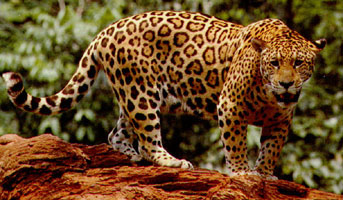
Jaguar: Panthera onca
Common Name: Jaguar
Kingdom: Animalia
Phylum: Chordata (Vertebrata)
Class: Mammalia
Order: Carnivora
Family: Felidae
Genus: Pantherinae Panthera
Species: onca
Misc: The Jaguar and the Leopard are often confused with one another in zoos. Their coloring and markings are so similar that it is difficult for people to distinguish them. The difference lies in the center of the Jaguars rosettes, because unlike the leopard, the Jaguar has spots inside of its rosettes! The Jag is also a much stockier animal than its cousin, with shorter legs and tail – giving it more of a pit bull type appearance.
 |
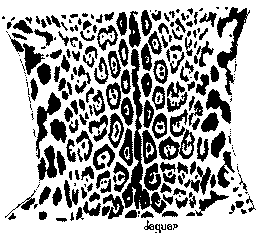 |
| Leopard coat pattern | Jaguar coat pattern |
SAVEJAGS
The name Jaguar comes from the ancient Indian name “yaguar” which meant “the killer which overcomes its prey in a single bound.”
Size and Appearance: Jags are the largest felines in the Americas. Adult males can reach an overall length of more than 7 feet, and can weigh anywhere from 150 to 200 pounds. As mentioned above, its coat color and markings are very similar to the leopard, with a rich tawny or yellow background with large black rosettes and spots. It has a larger head, more compact body, and much more powerful paws! The Jaguar also occurs with an all black (melanistic) coat, and like the leopard, the spots can still be seen on black individuals. Albino individuals have been reported as well.
 Habitat: The Jaguar is commonly found in rain forests, savannahs, and swamps, but at the northern end of its territory it may enter scrub country and even deserts. The Jaguar still has a stronghold in the Amazon basin, but has been nearly wiped out of all drier regions. Wherever it is found, it requires fresh water as the Jaguar is an excellent swimmer. To see Jaguars in the wild, or help them there, check out www.guato.org
Habitat: The Jaguar is commonly found in rain forests, savannahs, and swamps, but at the northern end of its territory it may enter scrub country and even deserts. The Jaguar still has a stronghold in the Amazon basin, but has been nearly wiped out of all drier regions. Wherever it is found, it requires fresh water as the Jaguar is an excellent swimmer. To see Jaguars in the wild, or help them there, check out www.guato.org
Distribution: Once found here in the United States (California, New Mexico, Arizona, Texas, Florida), this cat was hunted to extinction here in the late 1940s. Today, it is found in Mexico, but swiftly declining and Central America, and the strongest populations being found in the Mato Grosso, Brazil; The Pantanal, bordering Brazil, Bolivia and Paraguay; Chiapas State, Mexico; and the Yucatan Peninsula/northern Guatemala/Belize.
Reproduction and Offspring: Jaguars have no defined breeding season and will mate any time of year. After a gestation period of about 100 days, the female will give birth to a litter of 2-4 cubs. Mothers will continue to feed and protect her young until they are about 1 year old, and they will continue to stay with her until they are about 2 years old. They will reach sexual maturity between 2-3 years for females, and 3-4 for males.
In captivity, jags lived over 20 years, as compared to 11 – 12 in the wild.
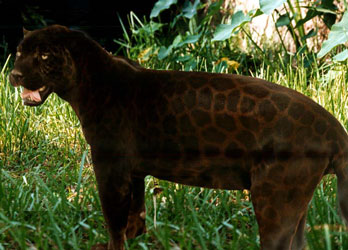 Social System and Communication: The Jaguar is solitary and terrestrial, although it is an adept tree climber. It marks its territory with urine and tree scrapes, in the same fashion as the other great cats. It has a variety of vocalizations, including, roars, grunts, and meows.
Social System and Communication: The Jaguar is solitary and terrestrial, although it is an adept tree climber. It marks its territory with urine and tree scrapes, in the same fashion as the other great cats. It has a variety of vocalizations, including, roars, grunts, and meows.
Hunting and Diet: Jaguars will pursue almost any kind of animal prey within its range, with its favorite being the peccary (a type of wild pig) and the capybara (the worlds largest rodent). Other food items are caiman, tapirs, and fish. Jaguars differ from all the other cats in their method of killing. Once they’ve caught their prey they pierce the skulls with their canines, demonstrating the amazing strength of their powerful jaws. They were once presumed to be nocturnal, but recent studies have shown that they are active during the daytime, with high peaks of activity during dawn and dusk. Jaguars are also more energetic than their larger cousins, and are active for 50-60% of a 24 hour period.
Threats: Deforestation rates are high in Latin America and fragmentation of forest habitat isolates jaguar populations so that they are more vulnerable to  the predations of man. People compete with jaguars for prey, and jaguars are frequently shot on sight, despite protective legislation. Jaguars are also known to kill cattle, and are killed by ranchers as pest species. The vulnerability of the jaguar to persecution is demonstrated by its disappearance by the mid-1900’s from the south-western US and northern Mexico. Commercial hunting and trapping of jaguars for their pelts has declined drastically since the mid-1970’s, when anti-fur campaigns and CITES controls progressively shut down international markets.
the predations of man. People compete with jaguars for prey, and jaguars are frequently shot on sight, despite protective legislation. Jaguars are also known to kill cattle, and are killed by ranchers as pest species. The vulnerability of the jaguar to persecution is demonstrated by its disappearance by the mid-1900’s from the south-western US and northern Mexico. Commercial hunting and trapping of jaguars for their pelts has declined drastically since the mid-1970’s, when anti-fur campaigns and CITES controls progressively shut down international markets.
Status: CITES: Appendix I. IUCN: Near Threatened. The jaguar is fully protected at the national level across most of its range, with hunting prohibited in Argentina, Brazil, Colombia, French Guiana, Honduras, Nicaragua, Panama, Paraguay, Suriname, United States, Uruguay and Venezuela, and hunting restrictions in place in Brazil, Costa Rica, Guatemala, Mexico and Peru. The species also occurs within protected areas in some of its range.
 How rare is this cat ? The International Species Information Service lists 292 worldwide, with 95 being in the U.S. Felid TAG recommendation: Jaguar (Pantherinae Panthera onca). Although perhaps the longest-lived large felid species, the recently approved SSP found the North American population in AZA zoos and most other locations to be aging and virtually untraceable. As this time, only 22 of the 95 U.S. jaguars can be traced back to nature. This population is being managed as an education population because of its relative abundance in many parts of its range. Additional founders are expected to be periodically available for inclusion into the SSP. The target population is 120 individuals.
How rare is this cat ? The International Species Information Service lists 292 worldwide, with 95 being in the U.S. Felid TAG recommendation: Jaguar (Pantherinae Panthera onca). Although perhaps the longest-lived large felid species, the recently approved SSP found the North American population in AZA zoos and most other locations to be aging and virtually untraceable. As this time, only 22 of the 95 U.S. jaguars can be traced back to nature. This population is being managed as an education population because of its relative abundance in many parts of its range. Additional founders are expected to be periodically available for inclusion into the SSP. The target population is 120 individuals.
How rare is this cat ? The International Species Information Service lists 292 worldwide, with 95 being in the U.S.
What is Big Cat Rescue doing for the Jaguar? We participated in an AZA sanctioned study by being the only facility to provide tracking information via detailed photos and casts of paw prints from our captive South American Pumas so that they could be discerned from jaguar tracks in Costa Rica. This will help researchers determine local populations and their habits so that land can be protected for their future.
National Geographic aired a wonderful documentary by Dr. Alan Rabinowitz called, In Search of the Jaguar.
Big Cat Rescue Helps Protect Jaguars in Belize
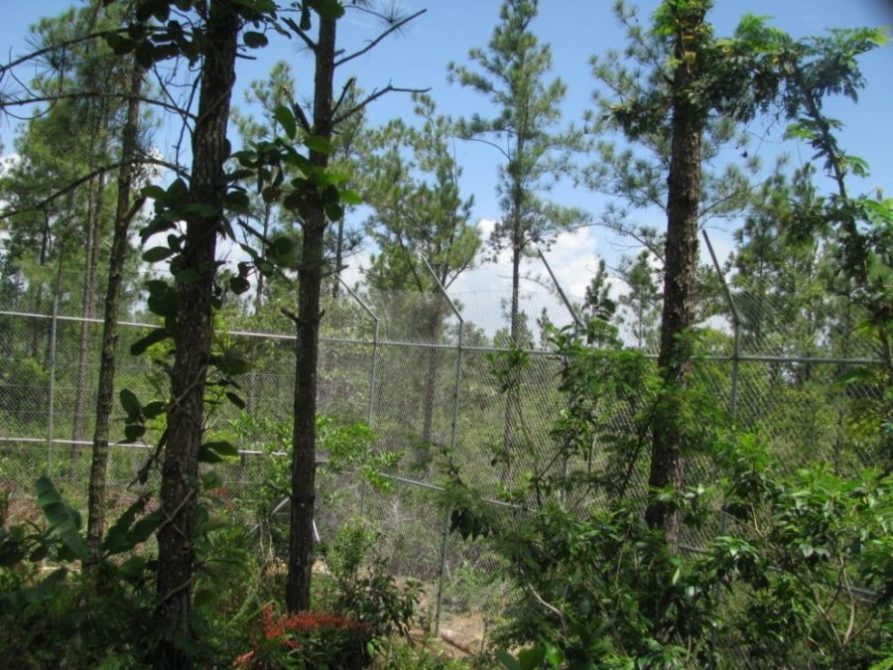 Belize Jaguar Project: In January 2015 an enclosure for two displaced wild jaguars, Lady Hill and Mistletoe, in Belize was sponsored in honor of all of the Big Cat Rescue volunteers, interns, and staff. Since then the team at the Belize Zoo has been working through the rainy season to build the enclosure.
Belize Jaguar Project: In January 2015 an enclosure for two displaced wild jaguars, Lady Hill and Mistletoe, in Belize was sponsored in honor of all of the Big Cat Rescue volunteers, interns, and staff. Since then the team at the Belize Zoo has been working through the rainy season to build the enclosure.
The main structure is now complete and includes night houses, swimming pools, and lots of natural habitat for these two jaguars to enjoy. The last step is to roof the enclosure, which they are currently working on. Here are a few photos of the progress.
These two jaguars were nuisance cats who came into very close proximity to where people reside. In order to spare their lives they were trapped and taken to the Belize Zoo which is a sanctuary for native wildlife that can not be released back into the wild. Had these two jaguars not been removed, they would have been terminated by the government.
December 19, 2017
Two of our heroes talking about jaguars in the wild.
December 23, 2017
FAQ Friday: How to Tell the difference Between a Jaguar and a Leopard
Many people have a hard time distinguishing the difference between a jaguar and a leopard. Let us clear that up for you! BigCatTV.com
[/vc_column_text][/vc_column][/vc_row][vc_row][vc_column][vc_custom_heading text=”Meet some of the jaguars who have lived at Big Cat Rescue:” google_fonts=”font_family:Open%20Sans%20Condensed%3A300%2C300italic%2C700|font_style:300%20light%20regular%3A300%3Anormal”][vc_masonry_media_grid item=”masonryMedia_SolidBlurOut” initial_loading_animation=”fadeIn” grid_id=”vc_gid:1591635562783-91b24a7e-496a-6″ include=”98599,98600,98601,98602,98603,98604,98605,98606,98607,98608,98609,98610,98611,98612,98613,98614″][/vc_column][/vc_row]



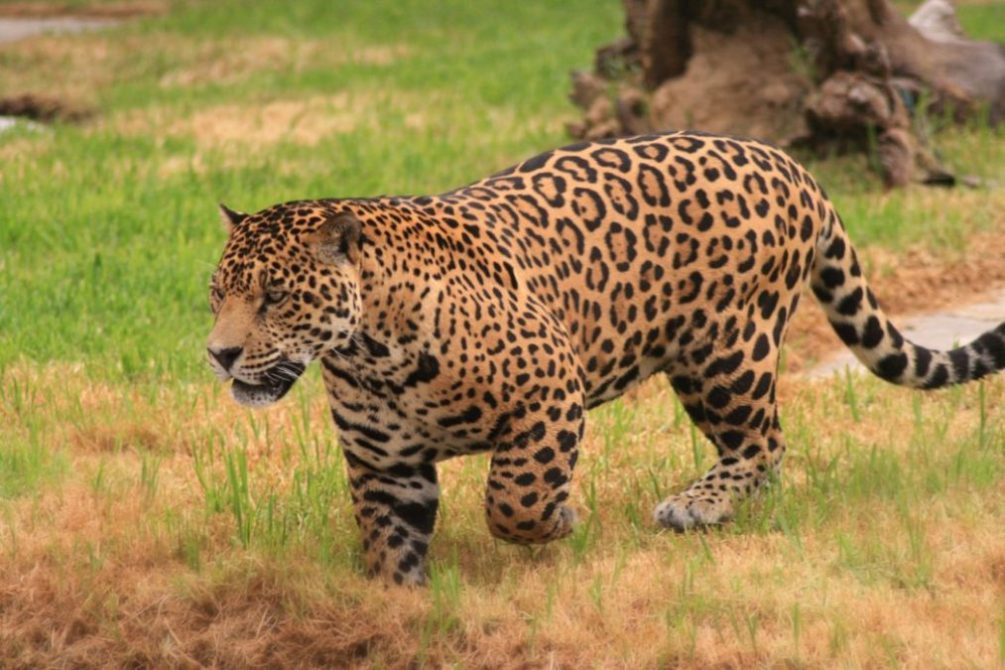
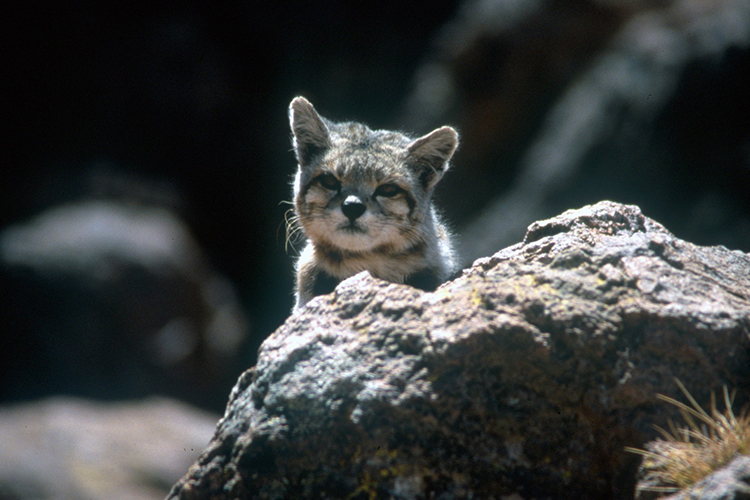
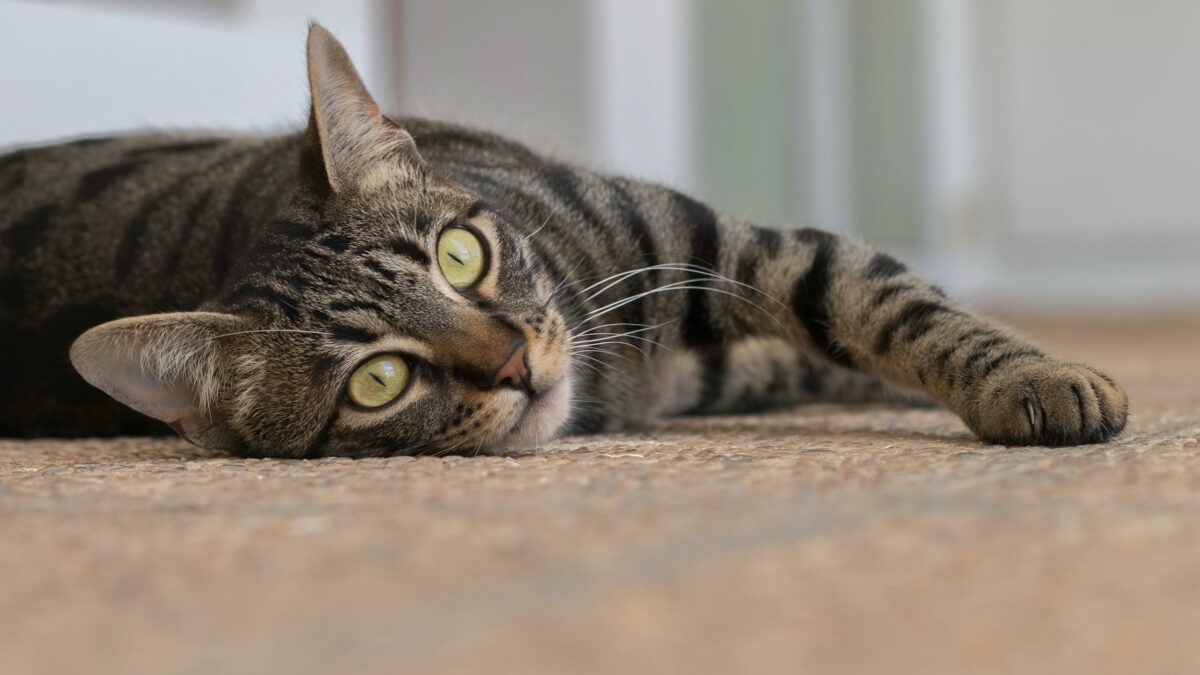
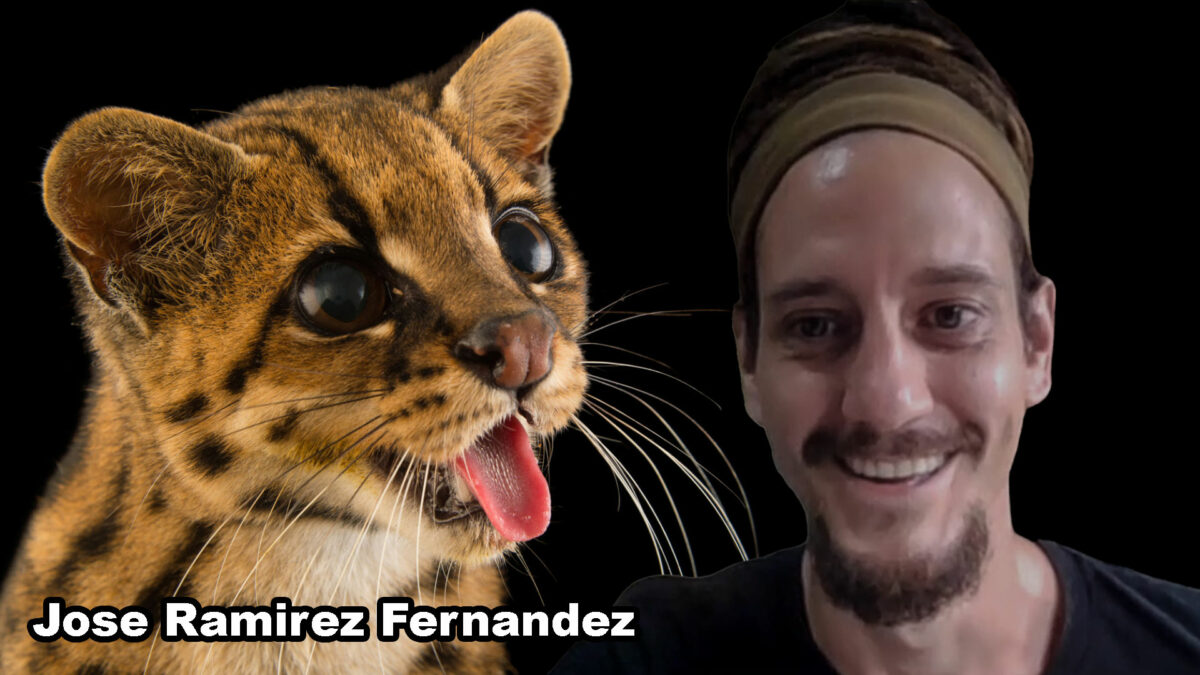
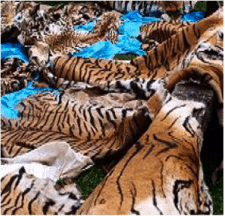

LOVE EM<3
I HAVE HAD IT MAD AS ALL HELL IM NOT JOKING ABOUT THIS AT ALL PEOPLE NEED TO UNDERSTAND WHAT IS GOING ON BEFORE THE NEXT ICE AGE START TO COME. NOW PLEASE DON’T TACK WHAT IM TALKING ABOUT THE WRONG WAY THIS EVERYTHING TO DO WITH ANIMAL’S AND SO MUCH MORE I KNOW ABOUT BIG CATS THE CAT’S I KNOW ABOUT ARE LIONS THE EUROPEAN LION THE WAS THE FIRST REAL SUBSPECIES OF THE AFRICAN LION PANTHERA LEO AND THAT LION IS WITH US TO THIS DAY. ONLY BECAUSE CONSERVATIONISTS PUT THERE LIVES ON THE LINE EVERY DAY AND THANK GOD. — FOR BIG CAT RESCUE—-PEOPLE NEED TO STOP TRYING SOCIAL MEDIA if you go to YouTube have explainers crap like that all we do is Google and they enter an expert on something they never went to one University ever graduated but I don’t have a degree or PHD. THEY WANT TO MAKE THE VERSUS VIDEOS COMPLETE WASTE OF TIME THERE IS SOME GOOD INFORMATION ON THERE BUT IF YOU DON’T BE CAREFUL YOU MIGHT GET YOUR INFORMATION FROM ONE OF THESE NUTS WHEN I CHANGE MY SEARCH ENGINE ON A SORRY ANDROID PHONE I HAVE STARTED USING MICROSOFT WELL THEN I FOUND THIS OFFICIAL WEBSITE A BIG CAT RESCUE THIS IS ABOUT ONE OF THE BEST WEBSITES YOU CAN COME ACROSS AND THEY KNOW WHAT THEY’RE TALKING ABOUT I’M MAD BECAUSE I GET A DOCUMENTARY ON BIG CATS I CAN’T EVEN POST IT NOW OR NOTHING BECAUSE SOMEBODY HACKED ME THAT’S THAT’S NOT GOING TO STOP ME MY NOTES AND EVERYTHING ELSE WERE HATS TAKEN ALL MIXED UP THESE NUTS DON’T UNDERSTAND ANYTHING ABOUT THE BIOLOGY OF THE ANIMALS SO THEY’RE NOT GOING TO KNOW HOW TO USE IT ANYWAYS I NEEDED MORE ON THIS MATTER NOW THAT I FOUND OUT THAT WE HAD THESE ANIMALS RIGHT HERE IN THE LAST ONE DIED IN THE EARLY FIFTIES SHOT I DIDN’T EVEN KNOW THIS THIS IS COMPLETELY STUPID AND I’M MAD AS HELL AND I WOULDN’T HAVE FOUND OUT ABOUT THE STUCK ON YOUTUBE THE GOOD FOLKS AT THIS BIG CAT RESCUE IS THE REASON I DID RUN INTO A HUGE PEOPLE ON YOUTUBE ONE OF THE PEOPLE I RAN INTO NOW HAS A JOB WORKING AT THE LA TAR PITS MUSEUM SORRY ABOUT THE MISSPELLING BUT IT’S MY STUPID PHONE ANYWAYS THIS MAN’S FATHER IS A BIOLOGIST SO WE UNDERSTAND BONE ANATOMY AND I’VE RECENTLY FOUND OUT THAT THEY CHANGED THE NAME UNDER GIANT JAGUARS AND STUPID STUFF LIKE THIS THAT’S BEEN GOING ON NEARLY 200 YEARS PALEONTOLOGISTS ARGUING AND WASTING THEIR TIME SPECULATING FOR NOTHING THAT’S WHAT SOME OF THESE UNIVERSITIES WILL DO BUT NOT THE PRESTIGIOUS UNIVERSITIES LIKE OXFORD UNIVERSITY IN THE UNITED KINGDOM THESE PEOPLE KNOW WHAT YOU’RE TALKING ABOUT WHEN IT COMES TO THE UNDERSTANDING OF ALL BIG CATS THAT WE STILL HAVE LEFT ANYWAYS THAT HASN’T BEEN HUNTING SINCE AN EXTINCTION BUT ALSO UNDERSTAND THIS AS WELL ALL TOO WELL THEY HAVE THE BEST FLYING BIOLOGIST PALEONTOLOGIST ZOO VETERINARIANS ANYWAYS MY PHONE’S ABOUT TO DIE SO I’M LEAVING THIS MESSAGE THANK GOD THAT BIG CAT RESCUE IS DOING SOMETHING ABOUT ALL THESE THINGS WITH ANIMALS THE GOVERNMENT’S STARTING TO PAY ATTENTION BIG TIME NOW BARACK OBAMA PASSED THE LAW INTO EFFECT SUPPORTED BY THE UNITED NATIONS 2008 WELL I HAVE TO GET OFF IN HERE I WILL BE BACK AND FINISH WHAT I’M TALKING ABOUT MOST OF THESE BIG CATS SHOULD BE WITH US RIGHT NOW AND THEY’RE GOING TO MAKE SURE THAT THEY ARE WITH THE REWILDING PROJECT IS HAVING MUCH SUCCESS IN RUSSIA AND UNITED KINGDOM EVEN THE UNITED STATES
. AND MORE during the Last Glacial Maximum . The creation of 3 to 4 km (1.9 to 2.5 mi) thick ice sheets equate to a global sea level drop…glacial period during the Pleistocene. Since planet Earth still has ice sheets, geologists consider the Quaternary glaciation to be ongoing, with the Earth now experiencing an interglacial period. a new epoch will begin soon this is natural and this is a part of Earth’s cycles but NASA AND THERE TOP SCIENTIST AND OCEANIC ATMOSPHERIC HAPPENS PEOPLE DON’T REALIZE ESPECIALLY THE AMERICAN LION AND HIS EXPENSE A COUPLE THOUSAND YEARS AGO NOT 15,000 YEARS AGO AND I WASN’T BECAUSE OF THE END OF THE IRON STAGE BECAUSE JUST LIKE EVERYWHERE ELSE FROM EUROPE TO THE NORTH AMERICA THEY WERE HUNTING INTO EXCUSE HIM JUST LIKE THIS BIG CAT YOU GUYS ARE TALKING ABOUT RIGHT NOW IT’S GONE THIS IS THE KIND OF STUPID CRAP THAT MAKES ME MAD
Jags have been spotted on rare occasions in the 'Pineywoods' of East Texas. Especially the black variety. Some of the orange ones have been spotted in New Mexico, Arizona and far Southern CA. I hope that we humans learn to leave them alone and let them enjoy their habitat. 😉
me too 😉
Leave the big cats alone….
I currently have a mother with cubs near my property. She is Melanistic/Black. I've been face to face with her on 3 occasions…twice at 20 ft and once at 30 ft. Last night she was out on my pond bank…she was talking to her cubs.
I've seen her full body twice…last night being the most recent. She is between 5-6 feet in length…every bit of 175-200 lbs.
She roars! Three times she has roared at me. Usually because I've startled her or gotten too close to her. She and I have an understanding now…I announced my presence and she does as well! We each back away from the other.
The kicker…I live in Central Arkansas! G&F keep comparing what I'm reporting to that of a Mtn. Lion…and it doesn't add up to be a Mtn. Lion. So, they are telling me it is just a large dog…though they have NEVER seen her!
I draw big cats. Had friends who had a pet Mountain Lion…which I was around.
This is a CAT! Others around our area have seen and nearly hit them crossing the highway!
She IS a Jaguar Panthera Onca! Lots of tracks around my pond and now in my garden!
Don't let silly boys at G&F ruin your day Aunt Moni, you know what she is and they just need to do there jobs!!!!
And please stay safe…
WHOOOOOOSH BOY HOWDY!!
Hey shawn have u seen that new pic of your mom on facebook she doing better just want u to know that k
Man has everyone fooled, yes they need their space. And the lions esp, all these animals will be roaming earth real soon.
all your cats are happy fat cat. Awesome. 🙂
I have photos of her and her prints.
i agree.
what bothers me is ifyou havean understanding and see the animal so frequently why would you not photograph this amazing creature. The fact that she says she sees the animal so often but has yet tried or produced pictures leads to the conclusion that she is lying or something. I do believe her but then she lacks and refuses to document proof so it sounds very fishy.
Wish we were allowed to post sighting photos here… These cats sound very different when they are in mating mode. Not knowing what we were dealing with and that we have lots of cattle ranches around us…two years ago February, while out with our puppy, I heard what I thought was a cow is serious distress! Did NOT have any reason to think there were big cats in our area…told my Hubby that I needed to call the rancher to check on the cows. It was around 11 p.m. Thing is this female jaguar got an answer as she had cubs! If you go to https://www.soundboard.com/sb/Jaguar_audio_Sounds scroll down to Female in heat…with a working knowledge, at the time being cattle, you will understand why I thought cow in distress!
The ranchers nearby have had calves disappear. One rancher had an adult cow attacked…huge, deep slices down it's back and sides along with a bite at the base of it's skull.
Can you post a picture on Facebook? I looked on your page hoping to see one. Thanks
i agree.
I love jaguars.Thanks for telling me a lot today.Oh yeah when was this website was made because its really helpful.
love you.